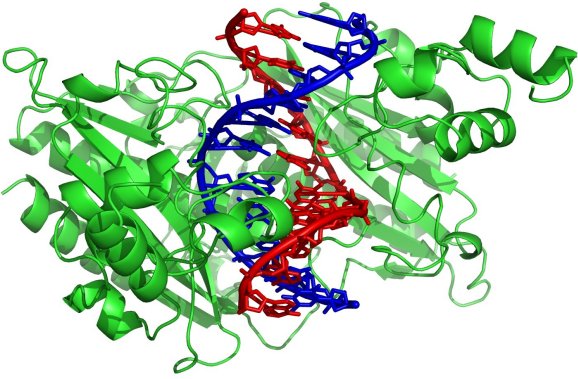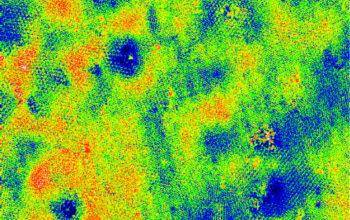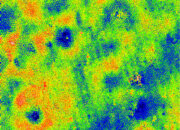The double helix, a structure synonymous with the essence of life itself, has long captivated biochemists and molecular biologists. However, recent insights suggest that this iconic formation does more than house genetic information. Emerging research indicates that it may act as a conduit for the transmission of electric charges, facilitating vital processes in protein functionality. This revelation opens a new vista for understanding molecular interactions and dynamics beyond traditional biochemical frameworks.
The double helix, primarily recognized as the structural backbone of DNA, is composed of two intertwined strands, held together by base pairs, which encode genetic information. Its stability and uniformity have rendered it a model of biological elegance. Nonetheless, the nuanced electromagnetic properties intrinsic to its topology must not be overlooked. Such properties lend the double helix a distinctive potential to transport electrical signals, effectively behaving like an ‘electric slide’ for proteins. This concept underlines a pivotal intersection between biophysics and molecular biology, challenging preconceived notions regarding the passive nature of the genetic material.
This transformative perspective begins with examining how the double helix can facilitate electronic coupling. Each nucleotide within the helix possesses a specific arrangement of atoms, contributing to the overall molecular dipole moment. This inherent polarity suggests that when the helix is subjected to external electric fields, it can influence charge distributions among the base pairs. This charge movement can create pathways for electron transport, particularly relevant during critical biochemical reactions involving proteins and enzymes.
The phenomenon of charge transport is particularly salient when considering the context of protein folding and function. Proteins are dynamic entities whose three-dimensional structures are dictated by interactions between their constituent amino acids. These interactions can be significantly enhanced by electrostatic forces, thus positioning the double helix as an active participant in modulating protein behavior. As proteins traverse along the double helix, the resultant electric fields might optimize conformational changes, ultimately refining their functionality.
A salient observation arises when considering the implications of these electric interactions on protein misfolding. Misfolded proteins are implicated in various diseases, including neurodegenerative disorders such as Alzheimer’s and Parkinson’s diseases. The ability of the double helix to regulate electronic conformation suggests that perturbations in its structural integrity could yield detrimental effects on protein fidelity. Understanding the link between double helices and protein folding dynamics could pave the way for novel therapeutic strategies targeting molecular misfolding.
Furthermore, the role of the double helix as an ‘electric slide’ extends into the realm of bioinformatics and biocomputation. As we probe deeper into the structure-function relationships of proteins, the electric properties of nucleic acids become a critical consideration in the design of biomolecular systems. With advances in nanotechnology, the potential to engineer DNA-based molecular devices or sensors that exploit these electric properties opens exciting avenues for the integration of biological and electronic systems, leading to innovations in biosensing, drug delivery, and diagnostics.
Addressing a broader observation, the fascination with the double helix and its electric capabilities can be traced back to its symbolic representation of life’s continuity and complexity. The aesthetic allure of its twisting structure juxtaposed with its functional significance poses a paradox, warranting deeper exploration into how such elegant formations can serve multifaceted roles beyond their conventional understanding. In contemplating the double helix’s capacity for protein transmission, one is compelled to appreciate the intricate relationships that govern molecular interactions in biological systems.
This revelation engenders further inquiry into the fundamental principles governing molecular supramolecular structures. By studying the hormone-like signaling of charged entities along the double helix, scientists could elucidate new biochemical pathways that contribute to cellular communication and metabolic regulation. Deciphering these pathways could have broad implications for understanding cellular homeostasis and the complexities of intercellular interactions.
The implications extend into evolutionary biology, where the dynamics of charge transport along the double helix may have played a role in the trajectory of biochemical evolution. Competitive pressures to optimize molecular interactions would have favored organisms capable of harnessing electrical properties for efficient metabolic processes and signaling. Understanding these evolutionary pressures forms a critical dimension of research, bridging our comprehension of molecular biology with larger evolutionary narratives.
In summary, the double helix’s transformation into an electric slide for proteins illustrates the multifaceted roles biomolecules may occupy within living systems. As scientists continue to unravel the complexities of molecular biology, the intersection of structural biology, biophysics, and evolutionary theory will emerge as crucial in deepening our understanding of life’s fundamental processes. The potential for practical applications arising from these findings signifies an unconventional yet promising shift in how we perceive the double helix—not merely as a repository of genetic information, but as an active participant in bioelectrical phenomena that underpin the very fabric of life.










